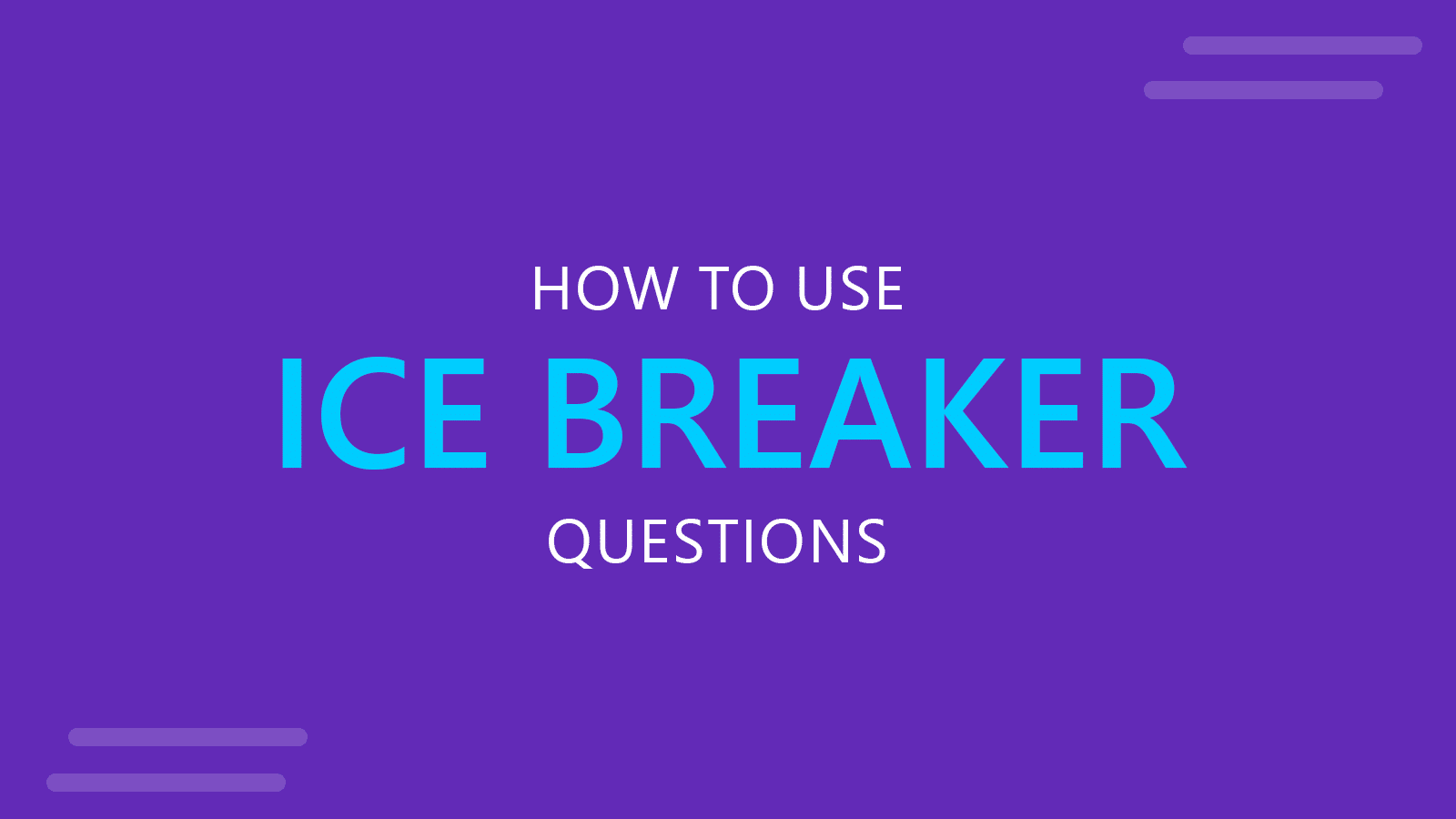How to Use Ice Breaker Questions to Engage Audience
Last updated on April 23rd, 2024

Ice breaker questions can play a major role in making trainings, team building sessions, and PowerPoint presentations engaging. There are a number of ways you can use such questions to engage an audience and to provide mental breaks during a hectic day of work.
What are Ice Breaker Questions?
Ice breaker questions are meant to break the ice and get the audience engaged. These questions can be asked for a variety of reasons including start of an event, to help audience members introduce themselves, for mental relaxation, and to make people think about a specific topic.
How to use Ice Breaker Questions to Engage an Audience?
Ice breaker questions can be used in different ways to engage audience, Below are a few examples of how to use ice breaker questions and games in specific activities, for adults and kids. You can use these methods during different types of events, such as team building exercises, training events, remote meetings, to engage students during a class, etc.

Introductory Questions
Introductory ice breaker questions can help people introduce themselves and share something personal or professional such as their hopes and aspirations or professional experience.
Speed Networking
Speed networking involves people quickly meeting people at an event to introduce themselves or share information and move to someone else in a specified period of time (e.g. 30 seconds). Ice breaker questions can be a great way to conduct such a session.
Breakout Sessions
A great way to make people engage with each other are breakout sessions. Some remote meeting apps such as Zoom even provide options to group people for a specified period of time in breakout sessions for discussion. You can also do this for activities planned for participants during an event with in person attendance.
Memory Wall
Memory walls can be used to enable audience members to share something memorable by posting it on the wall. You can use an ice breaker question to direct such a session.
Mental Breaks and Energizers
People can often get tired and weary during training or PowerPoint presentation. Mental breaks help energize the audience. Fun Ice breaker questions can help you conduct energizers and mental break sessions.
18+ Useful Examples of Ice Breaker Questions to Use
Below is a list of some suggested ice breaker questions. In our experience, these questions can help you to start a presentation or as an opening speech. Depending on your audience size, the best ice breaker questions can include all participants, people responding voluntarily or in turns. You can also have someone pull out names from a box to direct questions at people in your audience. Hence, what are some good ice breaker questions to engage your audience? Here are some effective examples that you can implement today:
Good Ice Breaker Questions for Training Sessions
If you were not engaged in your current profession, what profession would you have preferred?
What are your plans and aspirations for the next five years?
If you could have a superpower, what would it be?
Share an interesting fact about yourself?
How do you intend to apply the learnings from this training?
If you could be someone else, who would you be?
Ice Breaker Questions to Ask During a Break
Share something about yourself that no one might be able to guess.
What is your favorite leisure activity?
Name a historical figure you would like to meet and why?
What’s the bets piece of advice you have ever received?
What are your expectations from this training?
What did you learn today and how do you intend to apply it later?
Ice Breaker Questions for a PowerPoint Presentation
Is there a particular part of the presentation that you would like to talk about?
What comes to mind when you think about this presentation topic?
Does this presentation topic evoke strong emotions in you? If so, why?
What’s the one thing you hope to learn from this presentation?
If you could solve the issues mentioned in this presentation, how would you solve them?
Describe something you learned at a presentation session that you applied later?
If you need an image to accompany your slides, here is a great Ice Breaker design created with AI. You can also save time preparing your presentations and generating ice breaker slides using the AI presentation makers. Alternatively, you can use some PowerPoint games as part of the ice breaking activities, to make your session more engaging and interactive.

Ice Breaker Questions and Activities
Ice breaker questions and ice breaker activities can be a fun way to engage your audience. The below video describes what makes a good ice breaker activity for adults and kids.
Conclusion
Ice breaker questions can be used before or during different types of events to engage your audience, break monotony, give the audience a chance to relax, and to make people think about a specific topic. You can use a variety of ice breaker questions to engage your audience and make the most about planned activities. You can also opt for various activities related to fun ice breaker games such as truth or dare, memory wall, speed networking, and the like, or other online activities and event to do with the team.
We will send you our curated collections to your email weekly. No spam, promise!
